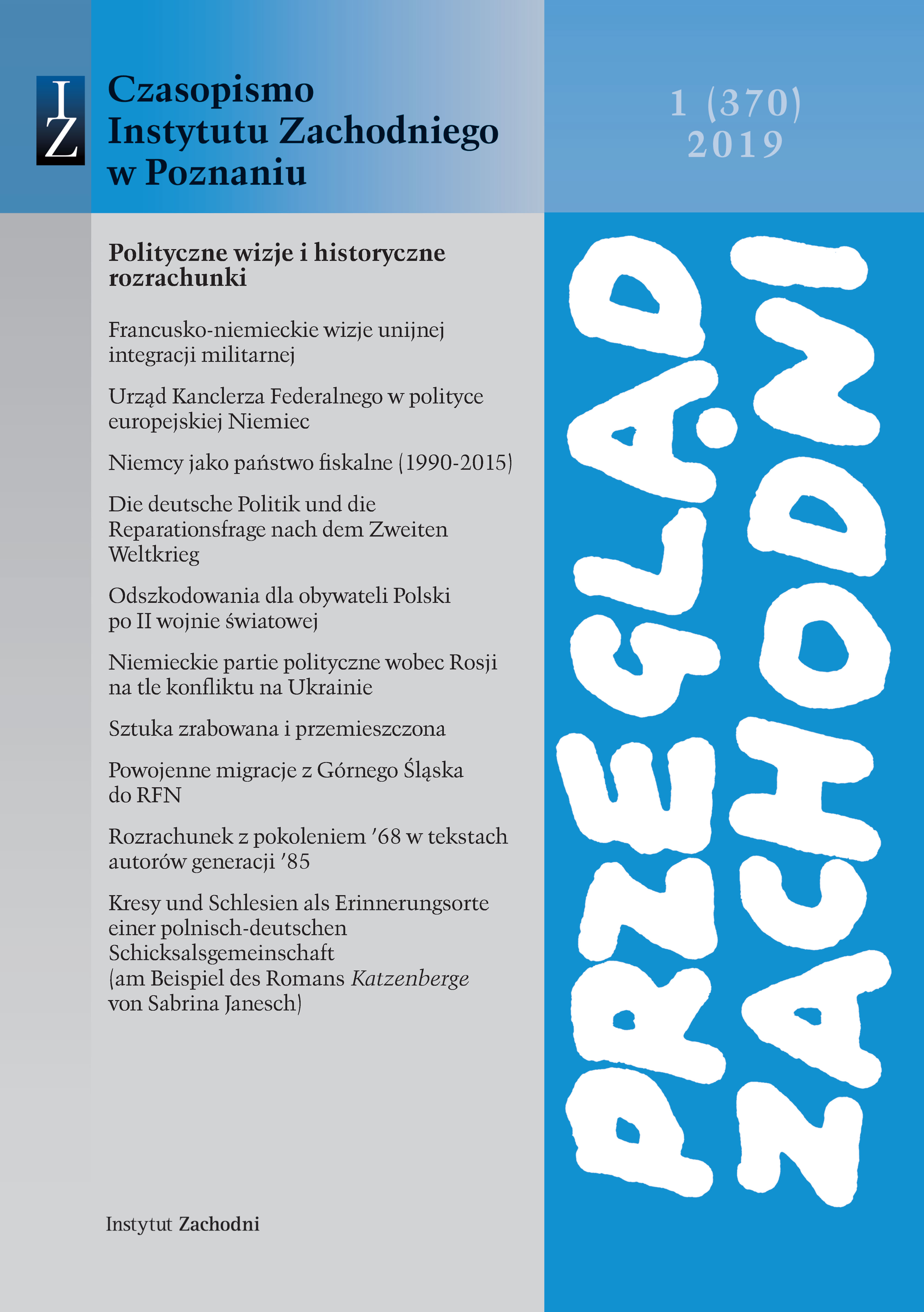Sztuka zrabowana i przemieszczona. Badania proweniencji – osobno czy wspólnie?
Looted and removed art, provenance research - together or separately?
Author(s): Nawojka Cieślińska-LobkowiczSubject(s): Cultural history, Diplomatic history, Recent History (1900 till today), History of Art
Published by: Instytut Zachodni im. Zygmunta Wojciechowskiego
Keywords: Polish-German cultural relations; cooperation of Polish and German art historians and museologists; restitution of removed cultural assets; Nazi theft of works of art; Jewish art collectors; provenanc
Summary/Abstract: The aim of the paper is to present the relevance of scientific research on the provenance of works of art and cultural assets looted during the reign of the Third Reich (1933-1945) as well as those removed in consequence of World War II. It postulates to commence Polish-German cooperation in this field, and appeals to the Polish and German circles of art historians, museologists, librarians and archivists to undertake joint studies within the area of broadly understood provenance of works of art and cultural assets unlawfully appropriated as a result of Nazi persecutions prior to and during world War II. The research problem is to identify the factors which following the downfall of communism and reunification of Germany hindered such cooperation. Besides contradictory stances of the two states: Poland and the FRG concerning “mutual restitution of removed works of art” these factors included mutual resentments and the mindset of both the German and the Polish professionals engaged in public collections, for whom studies of the provenance of “suspicious” objects played a marginal role. The author shows the gradual change of the attitude of German professionals to the problem of provenance studies in the last 20 years. Consequently, those studies began to receive political and institutional support and have even been recognized as a research discipline. No similar process and accompanying change of the “professional” mindset occurred in Poland; here the group of professionals who appreciate provenance studies is still very small. Meanwhile, the development of provenance research in Germany (likewise in Austria, Holland, France and the USA) has contributed to a marked increase of specific and general knowledge on the Nazi theft of cultural assets and its far reaching consequences. This enhanced knowledge, however, does not pertain to Eastern Europe and Poland, where German occupation lasted the longest and whose territory became a testing ground of mass Nazi looting of public collections and private property. As regards the three and a half million community of Polish Jews, Nazi plunder was of a total nature, anticipating directly the holocaust of 90 per cent of them. This acute research deficit calls for cooperation and cross-research based on broadly understood issues of the provenance of those works of art and cultural assets whose fate in the years 1933-1945 and the post-war period locate them within the scope of German or Polish history of art. Harbingers of such research can already be seen among Polish as well as German scholars but to date there have been no common undertakings and only they can be fruitful. The following research methods have been used in the article: systemic analysis, institutional-legal analysis and decision-making analysis.
Journal: Przegląd Zachodni
- Issue Year: 370/2019
- Issue No: 01
- Page Range: 123-140
- Page Count: 18
- Language: English, Polish

